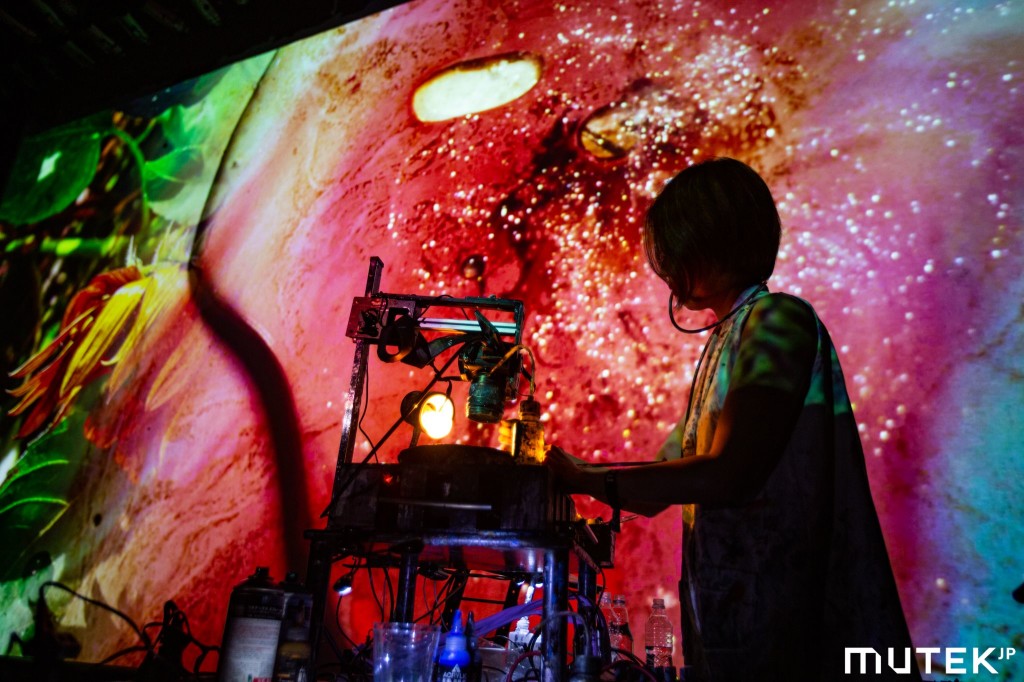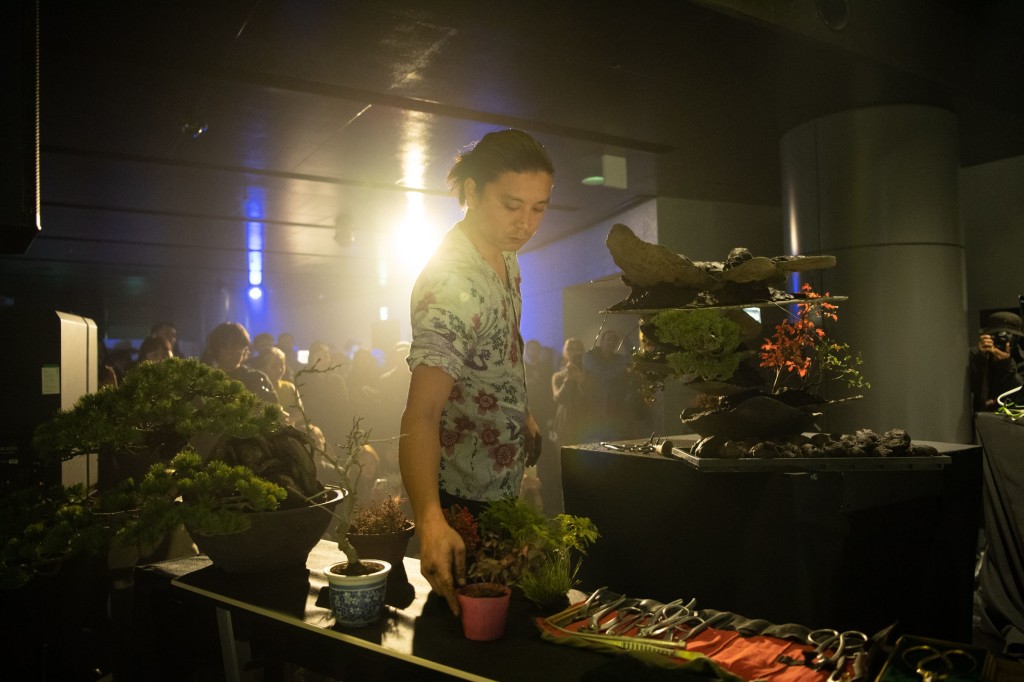At last week’s MUTEK.JP festival in Tokyo, amidst familiar touring works, you could spot a subplot – returning to color and fluid expression in live AV sets.
Tokyo is a perfect setting for new visual performance and visual music. It’s a town that has a long history of setting world standards for visual immersion in electronic music. Accordingly, it also birthed major VJ tech – some that caught on, some that didn’t. (Think the ground-breaking Motion Dive software, Edirol video mixers, KORG’s KAOSS Pad Entrancer – which still fetches high prices on Japan’s used market, and even Pioneer’s short-lived attempt to apply the CDJ concept to video.) Just be careful calling it ‘AV’ – that can be confused with the local moniker for video porn.
And the city itself is as constant a source of visual overstimulation as you imagine. That was perhaps best reflected at MUTEK.JP in the collaboration between Kode9 and legendary animator Koji Morimoto. (See a 2018 article for some background.) Their project together has ironically toured to Japan last, but in Tokyo it was as though the high-tech, seemingly virtual realm of Shibuya had burst through the walls at some moments.
MUTEK.JP, this year completing its fourth edition, is one of the younger satellites of the long-running MUTEK Montreal. That festival brand now extends from the Arab Emirates to Argentina. And it brings with it an aesthetic statement – one that remains popular, judging by the packed shows last week in Tokyo. Even in bigger venues, audiences for those acts were frequently packed shoulder to shoulder, Tokyo metro style. These satellites are independently organized, but if they act as a funnel for the core aesthetics of MUTEK Montreal over the years, it appears that audiences want that. (Not everyone can book a flight to Canada just to see a work.) And this long-term patronage (with other festivals) has helped works like Robert Henke’s Lumiere or Hiroaki Umeda’s choreography or Myriam Bleau’s instruments to see extensive refinement and iteration.
That said, I was peering around for what might be evidence of some new aesthetic directions. So, we’ve had a lot of hard-edged geometries and dazzling fog-and-laser effects and self-referential digital work. But paying particular attention to the local Japanese visualists, there was a sense of something new, more fluid, more colorful, and more organic – perhaps a painterly wing of the current visual scene.
For some examples:

Akiko Nakayama is a painter, making performative fantasies in liquid swirls of color. It’s worth mentioning that she’s a Millennial, in that there is unquestionably some sympathy to the Joshua Light Show approach of the 1960s. I think she has found a uniquely honed composition, though. It’s in line with a new generation that is taking a post-digital approach to physical media.

Line Katcho‘s performance (aka La Hyèna) was one of the most stunning, to return to one of the Quebecois artists. She filled the cinematic space with something that demanded a screen – big washes of digital texture that seemed to bloom like paint. There were spiderly webs of interconnected particles, whispy ghosts of geometries. It’s abstract, but suggesting a medium that is alive and evolving, rather than frozen in time.
Multidisciplinary collective nor represents the kind of mixed medium, highly technical collaboration that Japan seems to foster especially well. Their work dyebirth with its vivid colors (evidently scoring the sound) was another indication that 1960s optical-chemical light show techniques can be reimagined for our age now.

There were sonic pursuits of the organic, too. Yosi Horikawa reflects deeply on found sound and field recording. It’s compelling formally, too, percussive, with loads of space – breaking into rhythms, then freezing and pausing in space. To my personal tastes, the abstract moments are the most compelling, actually – I find myself wishing the intros were extended into the full performance. But there’s something compelling about the approach to sound.
Red Bull Music have done an extensive documentary (Japanese with English subtitles):
Listen:
There were a number of things that felt obviously self-referential in regards to Japanese culture – video games, check, anime, check, and none more so than the appearance of Bonsai.

But Masashi Hirao has the chops to back this up. He’s a rare young apprentice to a Bonsai master, in an art form that is rapidly diminishing in number of practitioners. For MUTEK Tokyo, he made a “live performance” of Bonsai, alongside talented producer Saskiatokyo (who was wisely picked up by DJ Kero’s label Detroit Underground). Here’s a Japanese-only video on his practice with plants:
This is not only a Japanese fascination. I’ve covered Leslie Garcia’s project for plant communication, to cite a Mexican example, and her Interspecifics collective continues to explore plant-human relations.
There’s more to say about MUTEK.JP and some of what’s up and coming in the Japanese music scene, of course – I hope to write that up over the holidays. And we also have yet to share some of what’s going on with the ongoing AI Labs hosted by United Curators, for which I was a facilitator. More on that soon.
But at the risk of highlighting mostly the opening of the festival last week, I think it’s always worth noting the material that is perhaps lesser-known – and which suggests a direction.